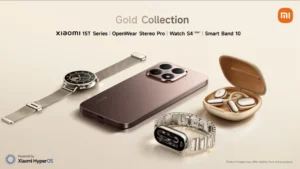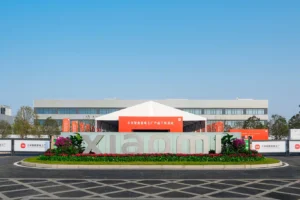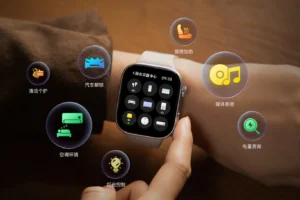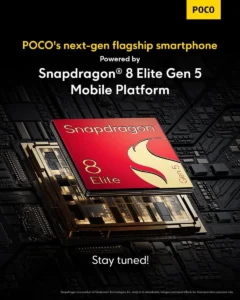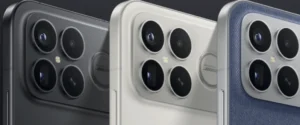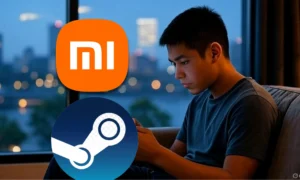Xiaomi XRING T1: Apple-Style Chip for Wearables
Xiaomi’s XRING T1: Following Apple’s Footsteps in Wearable Chip Design
Xiaomi’s recent foray into the high-end wearable market has sent ripples through the tech world. Their launch of the XRING T1, a self-developed chip specifically designed for smartwatches with 4G eSIM connectivity, marks a significant strategic shift. This isn’t just about another smartwatch chip; it’s a bold move towards technological independence, mirroring the strategies employed by giants like Apple. This article delves into the technical aspects of the XRING T1, exploring Xiaomi’s motivations and the broader implications for the global wearable market.
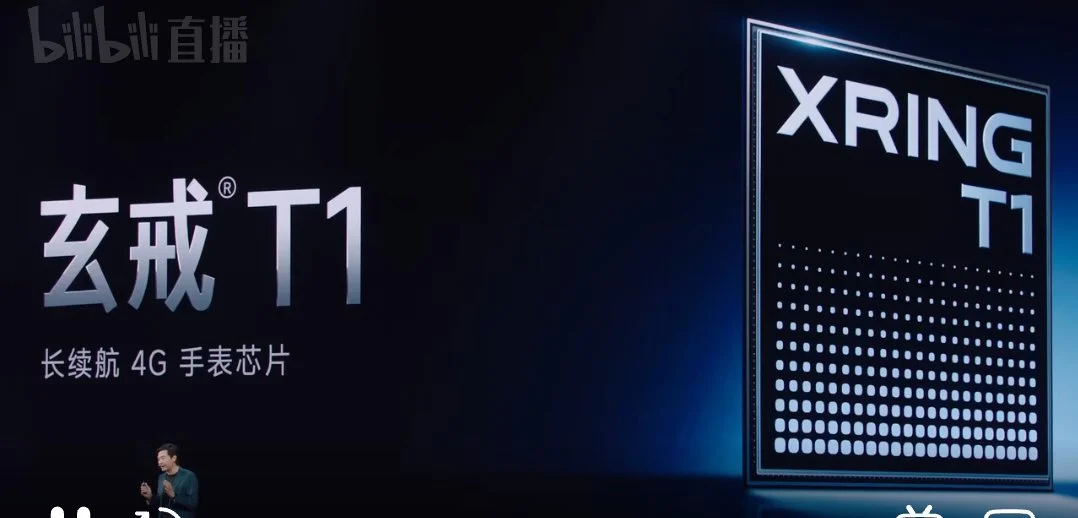
Xiaomi’s Wearable Dominance and the Need for a Premium Push
Xiaomi has cemented its position as a global leader in the wearable market. In the first quarter of 2025, they even surpassed Apple in shipments, boasting a remarkable 44% year-over-year growth, according to Canalys. This success is largely attributed to their affordable options, like the Redmi Band 5, and their mature ecosystem powered by HyperOS. However, to truly compete in the premium segment, Xiaomi needed something more—a proprietary chip offering greater control over performance and device integration, a path Apple has successfully trod with its S-series chips for the Apple Watch. This realization fueled the development of the XRING T1.
The XRING T1: Architecture, Features, and Efficiency
The XRING T1, developed by Xiaomi’s subsidiary Shanghai Xuanjie Technology, is a 4G chip purpose-built for smartwatches. Its core focus lies in energy efficiency and robust connectivity. XiaomiTime reports the chip underwent over 700 lab tests, ensuring compatibility with more than 100 urban networks in China. Key features include:
- Standalone 4G eSIM Connectivity:
Unlike many wearables that rely on a smartphone for connectivity, the T1 allows the Xiaomi Watch S4 to operate independently. This is perfect for activities like workouts or working remotely without carrying your phone. Xiaomi claims a 35% 4G performance boost compared to competitors, coupled with significantly lower power consumption. - Optimized Architecture:
While specific technical details remain undisclosed, Digitimes suggests an Arm-based architecture optimized for low power consumption. This includes innovations like an internal microcontroller dynamically managing power consumption—similar to Apple’s strategies with its S-series chips. - Exceptional Energy Efficiency:
Even with 4G connectivity active, the T1 enables the Watch S4 to achieve an average battery life of 9 days—a remarkable feat in the wearable segment.
This pragmatic approach—choosing 4G over 5G—is a key aspect of Xiaomi’s strategy. It reduces costs and avoids the high patent barriers associated with 5G technology, according to TechNode. This allows Xiaomi to compete in the premium segment without the upfront costs of a more advanced chip, echoing Apple’s gradual transition to its own C1 modem.
Following Apple’s Blueprint: A Strategic Imitation?
The T1’s development draws clear inspiration from Apple’s strategy of using custom chips like the S-series and the recent C1 modem to optimize the performance and integration of its wearables. Digitimes points out that Xiaomi, like Apple and Samsung, seeks greater control over its ecosystem by developing its own chips, enabling deeper hardware-software integration, particularly with HyperOS. This enhances the user experience by offering seamless connectivity between devices such as smartphones, tablets, and wearables.
Strategic Motivations Behind the XRING T1
The XRING T1’s development stems from several key motivations, as highlighted by Canalys and TechNode:
- Technological Independence: In the context of US export restrictions and China’s push for technological self-reliance, Xiaomi invested 13.5 billion RMB (approximately $1.9 billion USD) in chip R&D, with plans to add another 50 billion in the coming decade. The T1 reduces dependence on external suppliers like Qualcomm and MediaTek.
- Integrated Ecosystem: The T1 allows Xiaomi to optimize connectivity between its devices, strengthening its “people, vehicles, and homes” ecosystem, as emphasized by Lei Jun.
- Premium Market Differentiation: Similar to Apple, Xiaomi aims to differentiate itself in the highly competitive high-end wearable segment. The T1 enables advanced functionalities, such as independent connectivity, enhancing the appeal of the Watch S4.
Challenges and Future Outlook
The T1’s launch presents significant implications for Xiaomi and the global market:
- Competitive Advantage: The T1 positions Xiaomi as an innovator in wearables, challenging Apple and Samsung. Their focus on emerging markets, where basic wearables are popular, provides a volume advantage, as evidenced by their market leadership.
- Pressure on Traditional Suppliers: While the T1 reduces reliance on Qualcomm and MediaTek, Xiaomi still depends on them for 60% of its smartphone processors in 2024, according to Caixin Global. This could create tension in long-term pricing negotiations.
- Market Validation: As a first-generation product, the T1 faces the challenge of proving its reliability in the market against established competitors like Apple.
To address these challenges, Xiaomi is boosting its chip production capacity, with a team of over 2,500 engineers dedicated to R&D. The company plans to gradually introduce the T1 into more devices, such as the Xiaomi Watch 4s, and explore applications in other products like tablets and IoT devices. Furthermore, Xiaomi is working on a 5G solution for future chips, which could overcome the T1’s current limitations.
A New Chapter for Xiaomi in Wearables
The XRING T1 represents a significant leap forward for Xiaomi in the wearable technology market. By developing its own chip, it’s not just improving its hardware, but also forging a more integrated and independent ecosystem. While challenges remain, the XRING T1 demonstrates a bold strategic vision that positions Xiaomi as a powerful player in the global wearable market.
